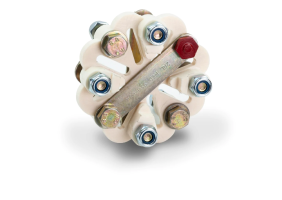Zinc Follow-up
Conclusion:
We’ll probably put an anode on the strut, too.
One of the subjects that started this thread was whether to put an anode on the strut. Below are pictures of what the prop gear looked like after being in the water August-October. We put PropSpeed on all the gear and two aluminum anodes on the shaft. (The zinc configuration that the boat came with.) The shaft, prop, and nut all look great other than one very small fleck of PS that came off the shaft. However, the PS on the strut had bubbles forming under it, all over. The forward anode had more corrosion than the aft. The strut is not connected to anything metal inside the boat.



I thought there was an off chance there was an incompatibility between the strut bronze and the PropSpeed. I wrote PropSpeed and their assessment is that the bubbles are caused by galvanic action. That seems consistent with what I see, but I thought I’d at least ask. I take their response to mean that PropSpeed will not prevent galvanic corrosion.
Just for background, we are in Rhode Island bay waters, mostly salty, on a mooring which gets regular complete flushing during tides. Block Island Sound and the Atlantic are four miles away. Our boat is 1/3-1/2 mile away from the nearest dock.

When we got the boat the strut was painted with bottom paint. It had no zinc. The boat spent most of it's time 2-3 miles up a tidal river, in an electrified marina. There was a small amount of corrosion, but it was actually inside the fiberglass. This is detailed in post #39+ of this thread.
Based on what we see here, I think we’re going with one anode on the shaft and adding one to the strut. Both will be aluminum. I’ll strip the strut PropSpeed and reapply. Any observations from y'all are welcome.






